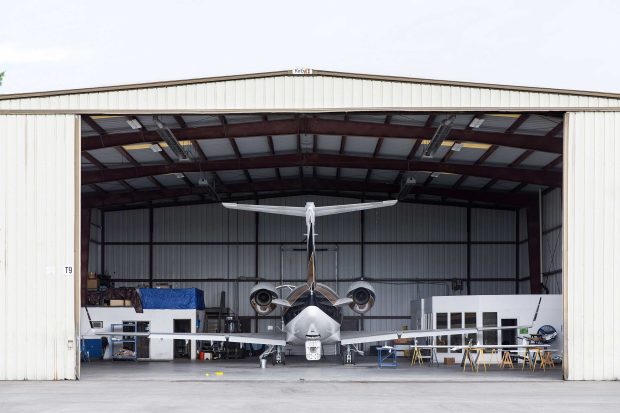When it comes to aviation, the airplane hangar stands as an iconic symbol of flight. These vast structures serve as the homes for aircraft, protecting them from the elements and providing essential maintenance and storage facilities. However, there is more to a steel hangar than meets the eye. Behind its towering doors lies a world of secrets and functionalities that contribute to the smooth operation of an aviation facility. In this article, you will explore the mysteries of the plane hanger, shedding light on its significance and the hidden elements that make it an essential component of the aviation industry.

- Shelter and Protection: The primary purpose is to provide shelter and protection for aircraft. These structures are designed to withstand harsh weather conditions, such as rain, snow, wind, and extreme temperatures. By housing aircraft within a hangar, they are shielded from the damaging effects of the elements, ensuring their longevity and operational efficiency. Additionally, hangars protect aircraft from potential hazards, such as bird strikes, debris, and vandalism. The secure environment of a hangar safeguards the valuable assets of an aviation facility.
- Maintenance and Repairs: Plane hangars are vital for aircraft maintenance and repairs. Within these facilities, specialized technicians have access to the necessary equipment, tools, and infrastructure to conduct routine inspections, repairs, and overhauls. Hangars often include maintenance bays, workshops, and dedicated areas for servicing aircraft components. The controlled environment of a hangar allows technicians to work efficiently and safely, ensuring that aircraft remain in optimal condition and are ready for flight.
- Storage and Organization: The vast interior of a steel hangar provides ample space for aircraft storage and organization. Hangars are designed to accommodate multiple aircraft, ranging from small private planes to commercial airliners. Within a hangar, aircraft are parked in designated areas, utilizing strategic layouts and advanced parking systems. Efficient organization ensures smooth access, reduces the risk of damage during movement, and optimizes space utilization.
- Fueling and Refueling: Plane hangars often feature fueling and refueling stations, providing a convenient and controlled environment for aircraft fueling operations. These stations include storage tanks, fueling pumps, and safety measures to ensure proper handling and storage of aviation fuel. With fueling capabilities within the hangar, aircraft can be serviced efficiently and securely, minimizing downtime and maintaining operational readiness.
- Administrative and Support Spaces: Behind the scenes, administrative and support spaces play a crucial role in aviation operations. Hangars may include offices, conference rooms, crew lounges, and control rooms. These spaces serve as command centers, facilitating communication, planning, and coordination among various aviation personnel, including pilots, ground crew, and administrative staff. Integrating administrative and support spaces within the hangar streamlines operations and enhances efficiency.
The Significance of a Plane Hangar
The plane hangar is not merely a structure; it is the beating heart of an aviation facility. Its significance lies in its ability to provide a safe and controlled environment for aircraft operations. By housing and maintaining aircraft within a hangar, the aviation industry ensures the safety of passengers and crew, protects valuable assets, and facilitates efficient operations.
Investing in one offers numerous advantages, including:
- Enhanced Safety: A dedicated hangar provides a secure and protected environment for aircraft, reducing the risk of damage and ensuring the safety of aviation operations.
- Improved Maintenance Efficiency: With dedicated maintenance facilities and infrastructure, a hangar streamlines aircraft maintenance and repairs, minimizing downtime and maximizing operational efficiency.
- Cost Savings: By protecting aircraft from the elements and potential hazards, hangars contribute to long-term cost savings by extending the lifespan of aircraft and reducing maintenance expenses.
- Operational Readiness: With fueling and refueling capabilities within the hangar, aircraft can be quickly serviced, ensuring operational readiness and minimizing turnaround time.
- Centralized Operations: The integration of administrative and support spaces within the hangar promotes effective communication, collaboration, and coordination among aviation personnel, optimizing overall operations.
In conclusion, the plane hanger is pivotal in the aviation industry. It is not merely a storage facility but a multifunctional space that ensures the safety, maintenance, and efficient operation of aircraft. From providing shelter and protection to facilitating maintenance, storage, fueling, and administrative functions, they unveil its secrets and demonstrate its significance as an indispensable component of the aviation ecosystem. As aviation continues to evolve, the airplane hangar remains a cornerstone of the industry, supporting the growth and progress of flight.



